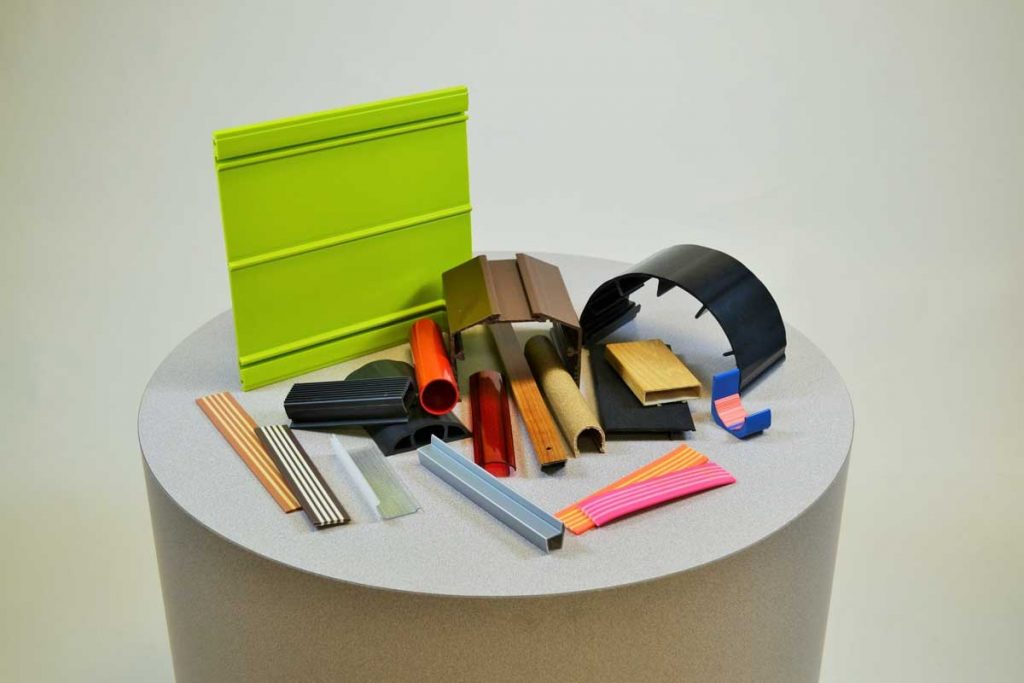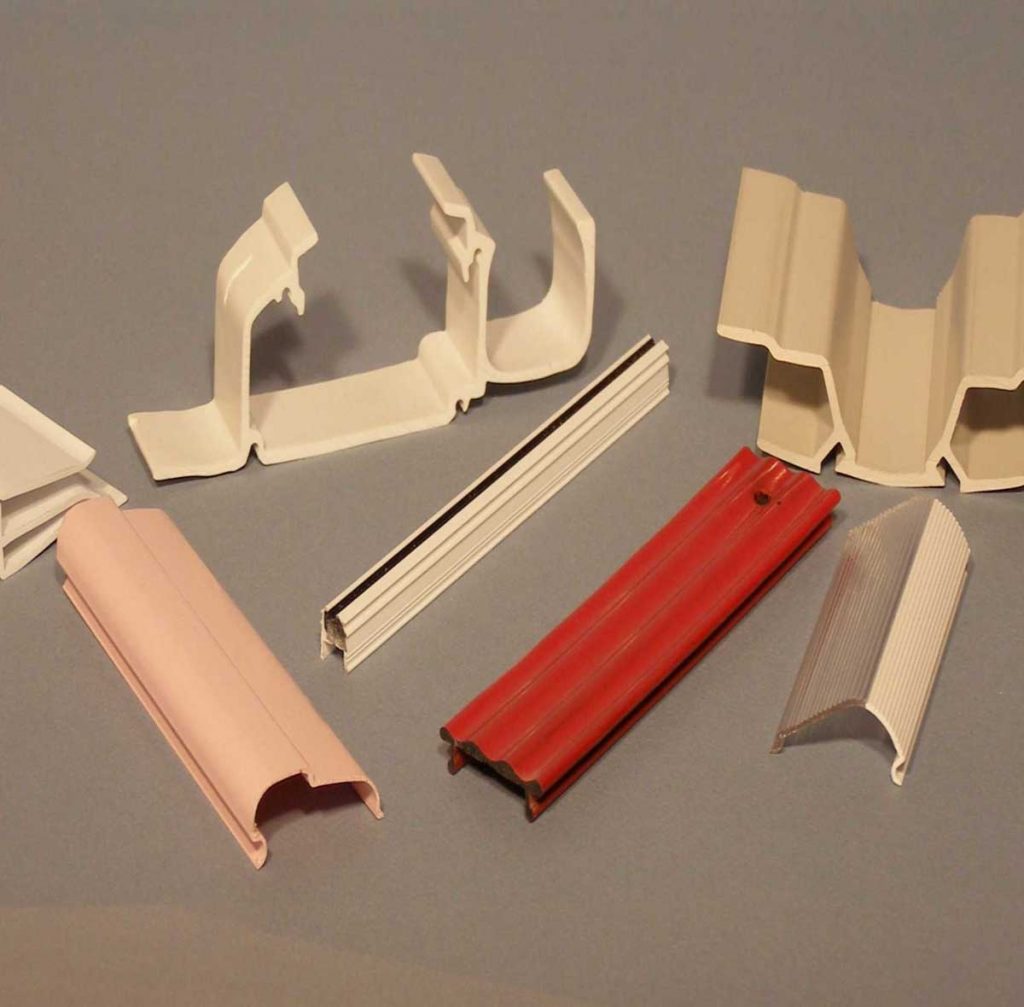Advantages of Plastic Extrusions
From the simplest toys to the most advanced medical products, plastic extrusion is viable for companies of all sizes for a few key reasons:
- High speed, high volume at low production cost
- Coextrusion
- Inherent versatility
High Speed, High Volume Production at Low Cost
The many production capabilities of plastic extrusion allow us to manufacture a high volume of parts both quickly and inexpensively. Combined with eliminated tooling costs and multiple machining centers, we’re capable of an even higher degree of cost efficiency and speed.
Plastic extrusion technology
 Unlike other forming technologies, the plastic extrusion process includes the option of coextrusion. Unlike a single-layer extrusion, coextrusion involves two (or more) extruders. With coextrusion, liquid molten plastic is fed from two extruders at different speeds and thicknesses into a single extrusion head. This then forms the materials into the required shape.
Unlike other forming technologies, the plastic extrusion process includes the option of coextrusion. Unlike a single-layer extrusion, coextrusion involves two (or more) extruders. With coextrusion, liquid molten plastic is fed from two extruders at different speeds and thicknesses into a single extrusion head. This then forms the materials into the required shape.
At its core, co-extrusion allows us to incorporate different plastic materials and compounds into a single product to meet various functional requirements ranging from UV treatment to glow-in-the-dark polymers.
The exciting thing about extrusion is that, despite the fact it has been around for years, it is still evolving. That’s why we focus so much of our business on innovation—because there are always new methods, technologies, and materials out there to make use of, such as nanotechnology. We stay at the cutting edge of plastics technology so we can deliver the best product to our customers.
Inherent Versatility
As a process, plastic extrusion is incredibly versatile. This enables us to create products with complex shapes and varying thickness, hardness, size, color, and texture.
In addition to “simple” or standard extrusion, we can offer you alternative manufacturing processes such as coextrusion or hollow profiling. These processes add even more available options to your extrusion project.
Plastic Extrusion Process
Plastic extrusion is the process of manufacturing raw plastic material into a continuous profile, usually in high volume. Using heat, “virgin” (new) or recycled plastic is formed into the desired shape. Plastic extrusion is used to make items such as piping/tubing, weather stripping, deck railings, wire insulation, fencing, plastic films and sheeting, and thermoplastic coatings.
Plastic extrusion can be done with a wide variety of materials, including nylon, ABS, rigid and flexible PVC, elastomers, and more. Depending on the material used, the plastic product can be either rigid, semi-rigid or flexible, as well as have any number of interesting properties. At Keller, we can even manufacture your profile using specialty materials, such as biodegradable plastics or glow-in the-dark ones.
The specifications of an individual job request will determine the precise sort of compound added to a hopper that sits over the screw opening, which itself is at the back of the extruder system. The components such as the screw and the barrel in which it is contained are heated so that the polymer is melted gradually, while the materials are sent toward the head of the extruder via the screw.
Upon reaching the front portion of the extruder, the polymer material is pushed through a custom opening made to suit the product’s specifications. It may be in the form of a tube, rod, or an alternative profile. After the material leaves the front of the extrusion machine, the heated material is sent to a tool engineered to prepare it for shaping into the desired extruded plastic profiles. Tooling equipment then ensures that the material is the correct shape and size required by the customer’s specifications and meets their print.
Because extrusion of this sort involves the melting of polymers, the ultimate shape and size of the part being made will be influenced by the tooling being used, but also by the person operating the extruder. This person is responsible for regulating the melt conditions and also for the cooling process that occurs at later stages of the process.
Every extrusion line is equipped with a takeoff unit at the end so that tension is exerted on the material as it leaves the extruder. This plays a significant role in the speed of the extrusion line as well as the final plastic extrusion shape.
At the very end of the extrusion machinery, the parts will be cut to the designated length or put on spools.
Once the parts are finished by the professionals at Keller Plastics, they are placed in containers uniquely suited to the product type, where these can take the form of bundles, boxes, or bulk packaging. The final step in the process is when the completed extruded plastic profiles are shipped directly to the location designated by the customer. Keller Plastics can handle all aspects of shipping to the final site.



